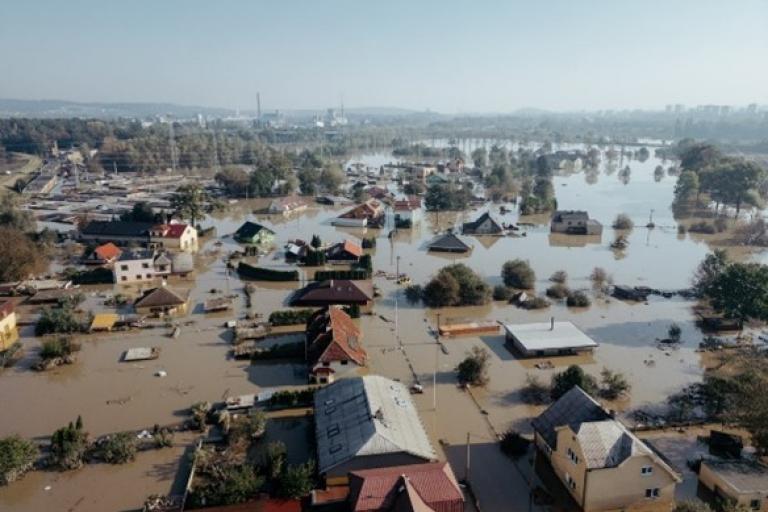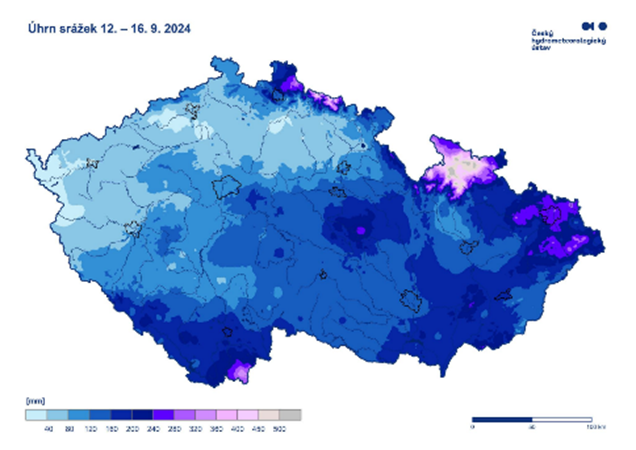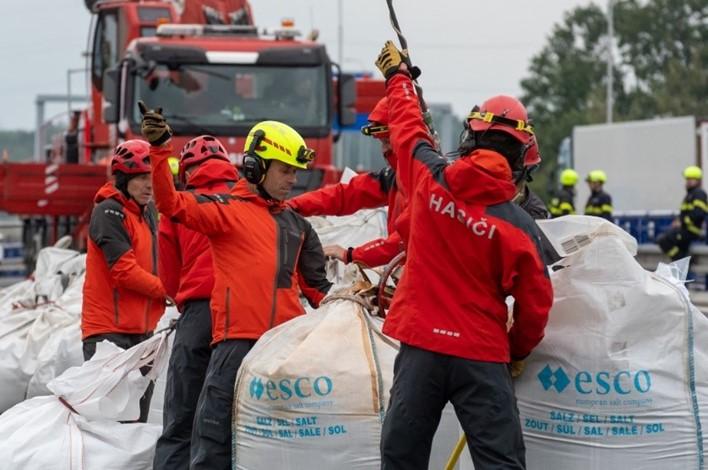June 2025: Lessons learned the Czech Republic’s September 2024 Floods
The 2024 floods in the Czech Republic highlighted the role of high-resolution forecasting, dynamic hydrological modeling , and multi-agency coordination

In September 2024, the Czech Republic and other parts of Central Europe faced severe flooding due to record breaking rainfall from Storm Boris. However, advances in flood forecasting capabilities and disaster risk management notably reduced the impacts. The floods highlighted the critical role of high-resolution forecasting, dynamic hydrological modeling, and multi-agency coordination in flood risk reduction.
Over six days, from 11 to 16 September, a total precipitation of 704.2 mm was recorded at the Czech Republic’s Loučná nad Desnou, Švýcárna, station. Many of the country’s other stations recorded precipitation totals higher than observed in 200 years. Initially, low antecedent soil moisture delayed the flooding onset such that significant water level rises only occurred after 60–100 mm of rainfall had fallen. But many rivers across the country experienced extreme flood levels that exceeded the 100-year record. The Opava River, which drains Jeseníky mountain ranges, the county’s most impacted region, rose to its highest ever recorded level.

Forecasting and early warning: The Czech Hydrometeorological Institute (CHMI) played a pivotal role in monitoring and forecasting the event, providing timely information for preparedness and coordinated response. Riverine flood risk was forecast 5 days in advance, based on meteorological forecasts that indicated precipitation totals. Hydrological simulations were updated continuously using real-time meteorological and streamflow data, allowing CHMI to identify high-risk zones with considerable accuracy.
Communication of forecasts and public awareness: CHMI and emergency management agencies released detailed warnings two days before peak flow, emphasizing extreme flood risks in specific areas, especially in the Jeseníky mountains region. The consistency of the forecast data was crucial for alerting the public and authorities, allowing for timely preparations to manage the flood. Risk management authorities launched a public awareness campaign with a slogan that translates to “We’re going to manage it together”. They campaign promoted flood safety protocols, including evacuation plans, emergency hotlines and information sources. The Czech Army and other emergency services were put on high alert, ready to act.

Coordinated response measures: The early warnings permitted authorities to coordinate response measures and to efficiently allocation of resources to risk areas. One of the most impactful strategies was the coordination of flow releases from flood-control reservoirs, securing additional storage capacity that would later permit reductions of peak flows – of up to 80% by reservoirs in the Odra River basin. Flood authorities and emergency teams prepared for evacuations, installing mobile flood protection features, such as sandbags, to reinforce levees and embankments. Based on the forecasts, the authorities initiated evacuations in high-risk areas and thousands of residents were relocated to temporary shelters, reducing the risk of casualties.

Ultimately, the combined measures saved lives and significantly reduced damages compared to previous major flood events. For example, though the impacted population was similar in numbers to that of a flood in 1997, that event’s death toll was 60 while the September 2024 event recorded 7 lives lost and 6 missing persons. In the most affected areas, damages were significant: riverbanks and floodplains were rechanneled, and some catchment retention capacities were exceeded. As per insurers’ preliminary estimates, damages amounted to 2.7 billion Euros.
Lessons learned: Protective measures to reduce flooding were successful where implemented, thus these are effective mitigation solutions and good practice. Risk-based spatial planning was also successful, especially in urban areas, and should be encouraged. The need for an integrated approach that combines technical, organizational and nature-based solutions was reinforced – no single measure can address all flood magnitudes or dynamics. However, an overestimation of quantitative precipitation forecasts (QPF) from meteorological models led to inflated projections of riverine flood risk in some areas, underscoring the need for more refine forecasting tools and improved communication around forecast uncertainty.

The September 2024 floods highlighted the value of continuous investment in proactive flood risk management and robust forecasting systems. The provision of more timely warnings facilitated swift, coordinated response which reduced damage and saved lives. Notably, institutional cooperation and heightened public awareness were shown to be essential components of effective crisis management, enhancing disaster preparedness, reduction and resilience.


